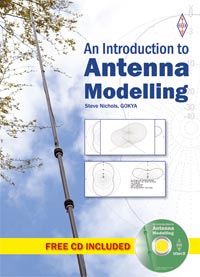Space weather prediction is an inexact science. We still don’t fully understand the Sun or how it works.
This means that predicting what HF radio conditions are going to be like over the next seven days can be challenging – especially when you have to produce the forecast a couple of days before it is published.
This week was a perfect example of how to get it wrong!
I prepare the HF part of the RSGB’s GB2RS Propagation Prediction forecast on Thursday afternoon. Jim G3YLA looks at VHF and Sporadic E, before it is sent to John G4BAO who adds some more info on any microwave propagation such as rain scatter and also adds the EME report.
I then edit it, add my HF predictions and send it to RSGB HQ so it can be collated, published and sent to GB2RS readers on Friday.
 |
| Sunspots on Thursday 23rd August 2018. |
At that point this week the Sun looked fairly innocuous with one tiny sunspot group, a solar flux index of 70 and a sunspot number of 15, representing one sunspot group with five tiny spots.
There were no obvious coronal holes and NOAA predicted the K index would likely be two all week due to a lack of geomagnetic disturbances. The US Air Force agreed.
So far so good!
At 04:45UTC on Monday 20th NOAA had reported:
“Region 2719 (S06, L=133, class/area Bxo/010 on 19 Aug)
developed in the SE quadrant on 19 Aug. No significant flare events
occurred from either region. Other activity included a filament
eruption centered near S11W04 observed lifting off the solar disk at
approximately 19/0538 UTC. An associated coronal mass ejection was
observed off the SW limb in SOHO/LASCO C2 imagery at 19/0812 UTC.
WSA/Enlil modelling of the event suggested the ejecta was primarily
directed westward of the Sun-Earth line and is not expected to cause
any significant effects.”
So the CME wasn’t earth-directed so shouldn’t be a problem – bear with me!
The NOAA report for Monday 20th August said there were no events.
The NOAA report for Tuesday 21st August said there was an RSP (a sweep-frequency radio burst) at 18:46UTC observed at Palahua, Hawaii, USA
The NOAA report for Wednesday 22nd August said there were no events.
The NOAA report for Thursday 23rd August said that at 20:23UTC on Thursday evening the older region 2719 emitted an an “A class” X-ray solar flare. “A class” flares are the weakest and it was after sunset in the UK so didn’t have any major impact for us according to the ionosonde data.
But there were further A class flares on Friday 24th August, which were at 12:47-12:50 UTC, 21:54-21:58 UTC and 21:57-22:01 UTC.
The Chilton and Fairford Ionosondes in the UK show Friday’s flare’s effect at 12:47 as there is a gap in the data.
You can see this at Jim G3YLA’s Propquest site at:
http://www.propquest.co.uk/graphs.php?type=archive
 |
But by Saturday 25th August a new large sunspot
group had appeared. |
By Friday another new sunspot group (2720) had emerged, which grew rapidly and by Saturday it was quite large. Sunspot AR2720 is not only large, but also strange. Its magnetic polarity is reversed. The North and South ends of its magnetic field are backwards compared to the norm for sunspots in decaying Solar Cycle 24.
So could AR2720 be from the next solar cycle, Solar Cycle 25? We’ve already had one reverse polarity sunspot which has been attributed to Cycle 25, but that was last year. This is going to be discussed over the coming weeks.
Action on Friday 24th August continued.
From 02:00UTC a series of solar flares were recorded, mainly from the new region 2720. These were B-class solar flares.
By the early hours of Sunday morning, 26th August the K index had started to climb, peaking at Kp7 at 03:00 and 06:0UTC. The bands on Sunday were lousy with a lack of signals across the board in the UK as the ionosphere collapsed. The 14.100MHz IARU beacons were all inaudible.
 |
The Kp index hit 7 in the early hours of Sunday
26th August 2018. |
A sweep with my SDRPlay receiver and SDRUno software saw very few signals on 20m at all and virtually nothing higher in frequency. There were a few weak and watery CW signals from Germany on 40m.
So what was the cause?
NOAA now says there
had been an earth-directed coronal mass ejection on Monday 20th August that no-one seemed to comment on at the time. NOAA’s own records don’t show any solar flares on Monday August 20th – see (
ftp://ftp.swpc.noaa.gov/pub/indices/events/20180820events.txt)
So was it this CME or the one on the 19th that is now reported as causing the high-speed solar wind stream that brought about the Kp7 event and auroral conditions? The experts seem to think so – now!
Or was it a CME as a result of the solar flares on Friday 24th August? That to me would seem more likely and fit in with the roughly two-day solar wind transit time to Earth.
SpaceWeather.com described it as a “surprise geomagnetic storm” and I think that’s a pretty apt description as no-one predicted it.
If that is the case there is no way I could have known about it when I filed the copy to RSGB on Friday morning. This report predicted quiet geomagnetic conditions for the week commending Sunday 26th August – I don’t think so somehow!
Oh, the joys of space weather and HF radio propagation forecasting!





















